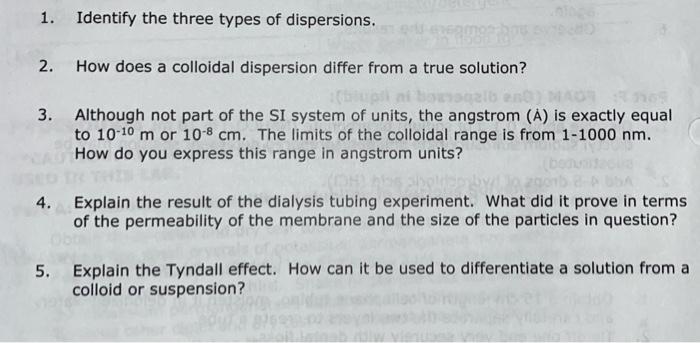Answered step by step
Verified Expert Solution
Question
1 Approved Answer
Although not part of the SI system of units, the angstrom (A) is exactly equal to 10-10 m or 10-8 cm. The limits of the
- Although not part of the SI system of units, the angstrom (A) is exactly equal to 10-10 m or 10-8 cm. The limits of the colloidal range is from 1-1000 nm.How do you express this range in angstrom units?
- (answers to the other four questions would also be appreciated)

Step by Step Solution
There are 3 Steps involved in it
Step: 1

Get Instant Access to Expert-Tailored Solutions
See step-by-step solutions with expert insights and AI powered tools for academic success
Step: 2

Step: 3

Ace Your Homework with AI
Get the answers you need in no time with our AI-driven, step-by-step assistance
Get Started


